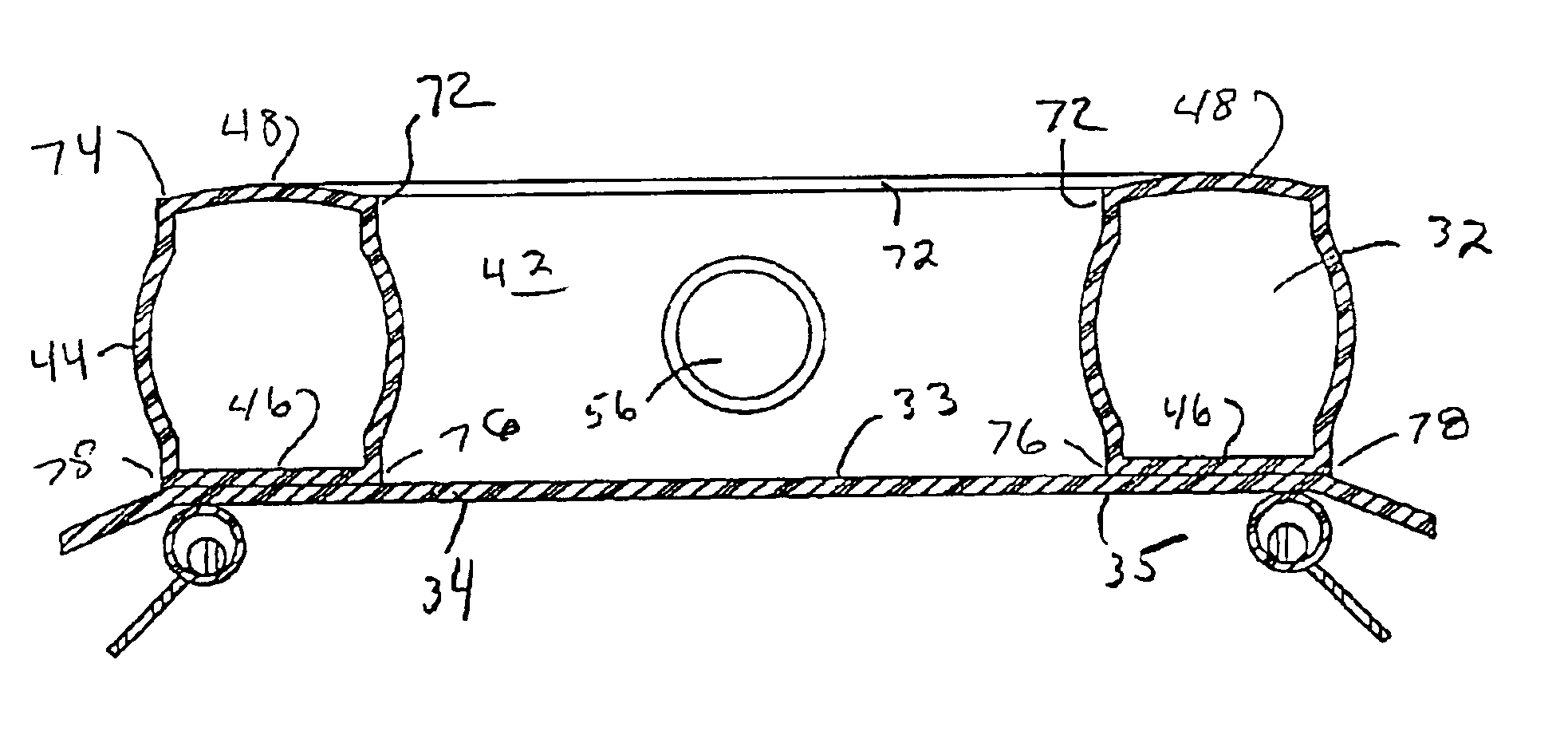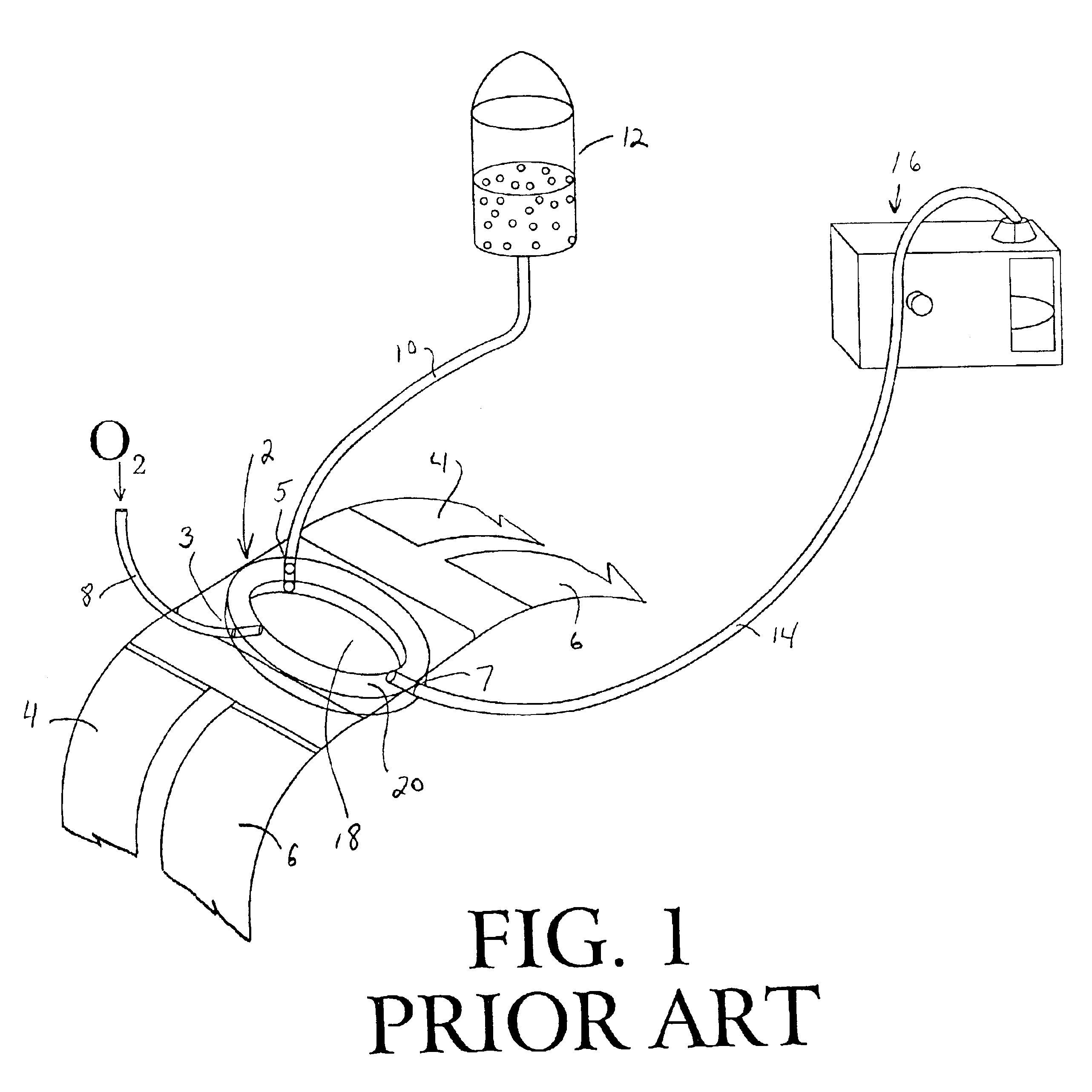Irrigation dressing with a tubular dam
a tubular dam and irrigation dressing technology, applied in the field of wound healing, can solve the problems of constant re-infection, delay in healing process, and inability to perform dressing changes by patients alone,
- Summary
- Abstract
- Description
- Claims
- Application Information
AI Technical Summary
Benefits of technology
Problems solved by technology
Method used
Image
Examples
Embodiment Construction
[0031]Referring now to the drawings wherein the showings are for the purpose of illustrating the preferred embodiments of the invention only, and not for purpose of limiting same, FIGS. 2-4 show a wound shield 30 including a hollow tubular inflatable dam 32, and a clear plastic window 34 attached to the dam 32. Dam 32 is formed of an inner peripheral surface or wall 42 which defines and surrounds a central opening 50. Dam 32 also includes an outer peripheral surface or a wall 44 connected to inner peripheral surface 42 by a rear or bottom body-engaging surface 48 and a front or top surface 46.
[0032]Dam 32 is provided with an irrigation aperture 52 extending from outer peripheral surface 44 through inner peripheral surface 42. Aperture 52 is adapted to receive or otherwise couple with an irrigation tube for providing communication between an irrigation system and central opening 50. Typically, the irrigation system provides an irrigation solution with medicinal characteristics for co...
PUM
 Login to View More
Login to View More Abstract
Description
Claims
Application Information
 Login to View More
Login to View More - R&D
- Intellectual Property
- Life Sciences
- Materials
- Tech Scout
- Unparalleled Data Quality
- Higher Quality Content
- 60% Fewer Hallucinations
Browse by: Latest US Patents, China's latest patents, Technical Efficacy Thesaurus, Application Domain, Technology Topic, Popular Technical Reports.
© 2025 PatSnap. All rights reserved.Legal|Privacy policy|Modern Slavery Act Transparency Statement|Sitemap|About US| Contact US: help@patsnap.com



